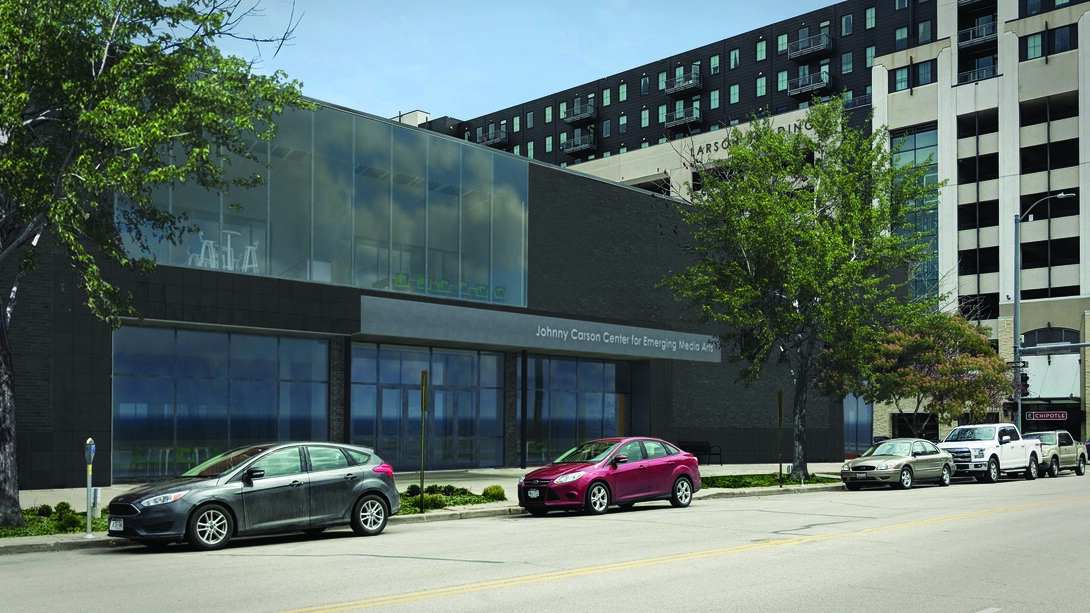
After nearly two years of foundational work in design, pedagogy and planning, the University of Nebraska-Lincoln’s Johnny Carson Center for Emerging Media Arts is now rolling toward its fall 2019 opening.
The construction of the center’s physical home at 1300 Q St. has started and its personnel roster is taking shape. Crews began staging the area for structural, mechanical and electrical demolition Aug. 16. Approximately 35,600 gross square feet will be renovated in the building, which was the former home of the Nebraska Bookstore, to create a hub for learning and a springboard to new ideas, projects and businesses.
Construction is to be substantially completed July 31, 2019, and will cost $9 million. The Johnny Carson Center for Emerging Media Arts was made possible by a $20 million gift to the University of Nebraska Foundation from the Johnny Carson Foundation in November 2015.

The three-story building will have a new façade on the outside, with an ever-changeable interior. Moveable furniture, upgraded building systems, network capacities and natural light have all been included, giving the space flexibility to meet all future needs as technology evolves.
“We’ve got as much internet connectivity and power as possible, and it’s everywhere,” Megan Elliot, the center’s director, said. “Everything is on wheels so students can build their own learning spaces. The whole point is that it maximizes the potential for collaboration and interaction.”
The building will boast dual 10-gigabyte connections to the campus network and will have a complete communications cabling system, including CAT 6A and fiber-optic connections throughout the space.
“The Carson Center is technology-driven, and the infrastructure is designed to cater to what will happen in the next five years and beyond,” said Swetha Gadwal, project manager for Facilities Planning and Construction.
Gadwal said the process of designing the building, which began in earnest in May 2017 and wrapped just two months ago, has been an unusual and challenging undertaking because it was done in lockstep with the development of the center’s curriculum. The project’s team met often and traveled to multiple institutional and industry spaces to see firsthand how design influences learning and creativity.
Meanwhile, Elliot has entered recruitment mode to build out the team of faculty and attract the center’s inaugural group of students. Megan McMasters, who will serve as the center’s director of operations, is the first member of that team.
“I’m thrilled to bring Megan aboard,” Elliot said. “We’ll be adding five faculty before the center opens, and we have a goal of 25 students for our first cohort.”
The center’s curriculum is expected to be approved by the Coordinating Commission for Postsecondary Education in September. Then, Elliot said, they will open up applications for admission.
Elliot said she’s also looking forward to welcoming the community to enjoy its gathering and work spaces, exhibition areas and more.
“We want it to feel porous — a part of both campus and Lincoln — so that the community can come and feel as welcome as the students,” Elliot said.







